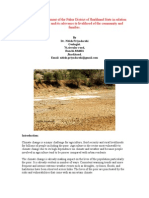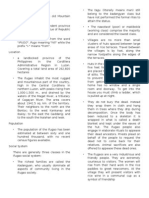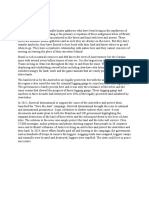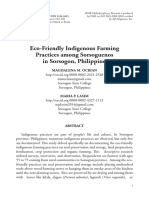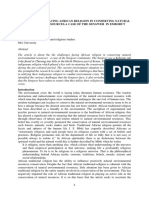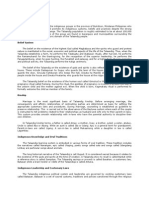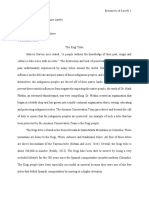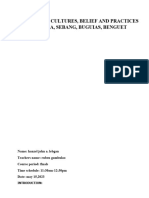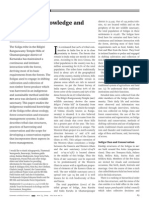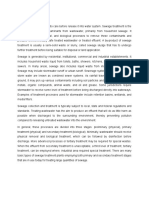0% found this document useful (0 votes)
24 views4 pagesField Observations
The document discusses gender roles and responsibilities in a community, where women are primarily responsible for childcare, household management, and farm work. It also covers traditional leadership structures, cultural preservation challenges, land rights issues, and environmental impacts from logging and other activities.
Uploaded by
mitoy magnoCopyright
© © All Rights Reserved
We take content rights seriously. If you suspect this is your content, claim it here.
Available Formats
Download as PDF, TXT or read online on Scribd
0% found this document useful (0 votes)
24 views4 pagesField Observations
The document discusses gender roles and responsibilities in a community, where women are primarily responsible for childcare, household management, and farm work. It also covers traditional leadership structures, cultural preservation challenges, land rights issues, and environmental impacts from logging and other activities.
Uploaded by
mitoy magnoCopyright
© © All Rights Reserved
We take content rights seriously. If you suspect this is your content, claim it here.
Available Formats
Download as PDF, TXT or read online on Scribd
/ 4

















